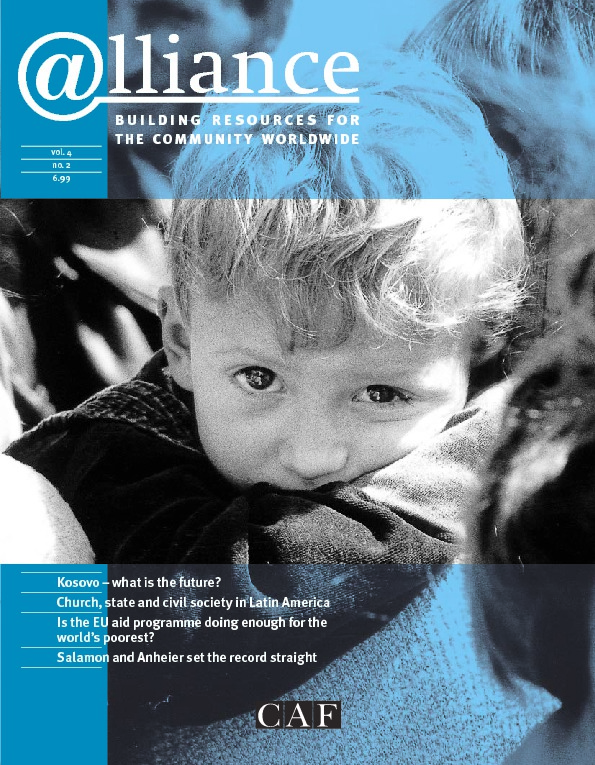Civil society is widely seen as the agent of change that could potentially cure a range of social and economic ills left by the failures of government and market. Civil Society and the Aid Industry seeks to highlight some of the promises and dangers that the language of civil society brings with it. It also analyses donor practices in four countries — Hungary, Kenya, Peru and Sri Lanka — in the light of the dynamics of civil society in these countries.
The book tracks the concept of civil society from the Romans (where it meant civilized political community), through Toqueville (voluntary associations to counterbalance the power of the state) to Hegel and Marx (contradictory interest groups). The reasons for the resurgence of interest in this concept are well explained: decline of the welfare state, end of the communist regimes in Eastern Europe, decline of family and social cohesion. The book also warns against a misconception which tends to identify civil society with the third sector or NGOs.
But, as editor Alison Van Roy points out, theoretical discussion does little to guide policy. The book illustrates the contradictions between what donors proclaim as policies and what they are really doing in practice.
From the fifties till the eighties the state was assigned a central role in foreign aid.
From the eighties on, the market, the private sector and civil society assumed a much larger role. Nevertheless the main country donors (America, Japan, Germany) and financial multilateral organizations (European Union, World Bank, regional banks) still privilege agreements with states in their aid programmes – though small countries like Canada, Holland and Switzerland have more decentralized aid programmes with increasing participation of local civil society. Research done by the Latin American Faculty of Social Sciences (FLACSO) in four Latin American countries (Argentina, Brazil, Colombia and Peru) shows the very limited civil society participation in the multilateral organizations’ development programmes.
Some of the guidelines given in the conclusions are good (need for a long-term perspective, real representation of civil society organizations, planning that takes account of the voices of local people, transparency) but still too general. Participation by civil society, in my view, is closely linked to decentralization of aid and reform of aid management systems. Too many big decisions are taken today by northern and southern bureaucrats in the capital cities. Very few are decided in the villages or regions. One notable exception is the Bolivian Law of Popular Participation. Civil society participation in multilateral organizations consists largely of policy discussions with NGOs rather than practices. More space for dialogue between northern and southern civil societies is urgently needed.
The four cases analysed in the book make a good start, but we still need to know much more.
Mariano Valderrama is a researcher at CEPES (Peruvian Centre for Social Studies) and a member of the Management Comittee of The Reality of Aid. He can be contacted on +51 1 433 6610 or at Mariano@cepes.org.pe
Civil Society and the Aid Industry
edited by Alison Van Roy
Earthscan £15.95
To order, phone Littlehampton Book Services.
Tel +44 1903 828 800
Fax +44 1903 828 802
E-mail orders@lbsltd.co.uk





Comments (0)